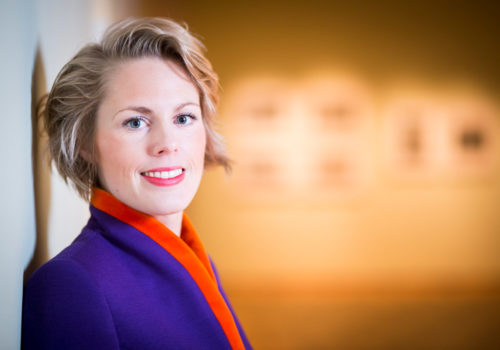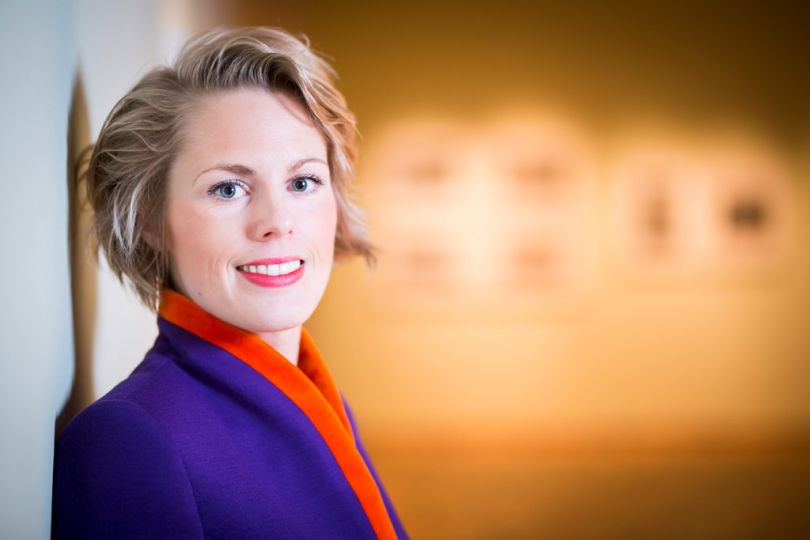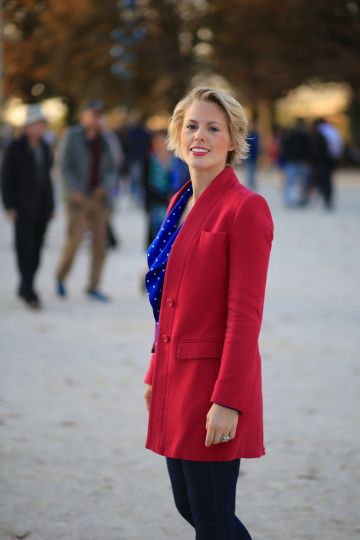Tatyana Franck, who, at a mere 30, steers the destiny of the future Musée de l’Elysée, located at the heart of a new museum campus near the Lausanne train station, and whose precocity is equaled only by her tenacity, received us with welcoming simplicity. There is no doubt that her organizational energy is going to do wonders in what has become a very competitive landscape, where the Vaud institution is going to face many challenges following the departure of Sam Stourdzé.
Part II: Collections
According to you, what is the trademark of the Musée de l’Elysée and how do you intend to expand it?
Beyond the significant number of pieces in the collection, one million phototypes, 170,000 positives, 800,000 negatives, 20,000 photography books, hundreds of photo albums, it’s the richness and variety of photographic techniques which distinguish it. A strong emphasis will be put on the museums collections. Therefore, I wish to progressively include works from our collections in temporary exhibitions. Last winter, we had presented the iconic Vaud collection, leading to the creation of the Musée de l’Elysée as a museum of images and then of photography. This year, with the exhibition Anonymous, Urban Life in Contemporary Photography, Pauline Martin, exhibition curator at the museum, immersed herself in the collections to bring out a common theme among a number of works from our collections. In my exhibition coming this summer, La Mémoire du Futur, Photographic Dialogues between Past, Present, and Future, the heart of the collections will be emphasized.
Finally, through our magazine ELSE which became a collection periodical, we also show emerging talents coming from the four corners of the world alongside unpublished portfolios from our collection. A strong editorial message.
Does that mean exporting produced exhibitions?
Yes, like with the Philippe Halsman exhibition which, after Paris at the Jeu de Paume, just opened at Rotterdam and next will go to Madrid and Barcelona. Same for reGeneration3, at the moment in Puebla, Mexico. It will travel around the world over the next five years. It is an emblematic axis that we will certainly pursue.
Museums are becoming more and more like trademarks. How are you dealing with that?
It is a challenge and an especially good time to ask ourselves “Who are we?”, to think about the museum in coordination with the teams. What is it to construct a photography museum in the 21st Century? And why a photography museum? It has been thirty years since founder Charles Henri Favrod fought to make photography exist. Now it’s everywhere. It is a real debate we are having.
One of the medium’s evolutions over these last years is this paradox between creativity and hybridization of genres and a return to pioneering techniques. How can the museum reflect this constantly evolving panorama?
We wish to show the diversity of photography. One of the strong points of the reGeneration exhibition was to raise these contradictions with young photographers who consider themselves more like full-fledged artists. We presented installations, performances, sculptures, projections. Currently a real challenge at the time of return to materiality with these young photographers who go to the old Mourlot print shops to reprint their photos on lithograph paper.
Are your acquisition policies simultaneously constructed with the exhibitions?
Our intention is to acquire missing iconic photographs, all while supporting contemporary production. For example, during the Paléo music festival at Nyon to commemorate their forty-year and our thirty-year anniversary, we commissioned contemporary photographers then decided to acquire their work to support them . A committee controlled by curators and myself get together four times a year to decide upon these acquisitions. We work to develop the photographic funds, as did my predecessor Sam Stourdzé. I find this to be an interesting policy to the extent that the mission of a museum is to help conserve and preserve, but also to give value.
Today, how is one able to show a photographic book and make it accessible?
Thanks to digitization. In this sense, we initiated an ambitious digitization project in partnership with the ’Ecole Polytechnique Fédérale de Lausanne, EpfL. We acquired a scanner that let us digitize 1,500 pages per hour and match the curvature of the books as to not damage them. Our wish is to be able to develop an online platform to give access and to share with a large number of people. For the moment, we have digitized 2,000 books, that being ten percent of our collection. The objective is to present, in the future museum, a big documentation center firstly dedicated to freely access books and precious objects on request, in order to give back to the public access to its visual heritage.
The third part of interview will be published tomorrow, Wednesday April 13th.
INFORMATION
Musée de l’Elysée
Avenue de l’Elysée 18
1006 Lausanne
Switzerland
http://www.elysee.ch


















